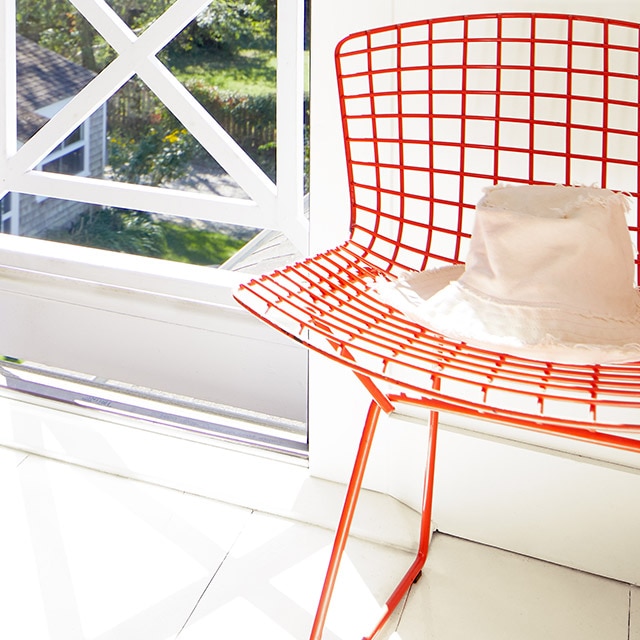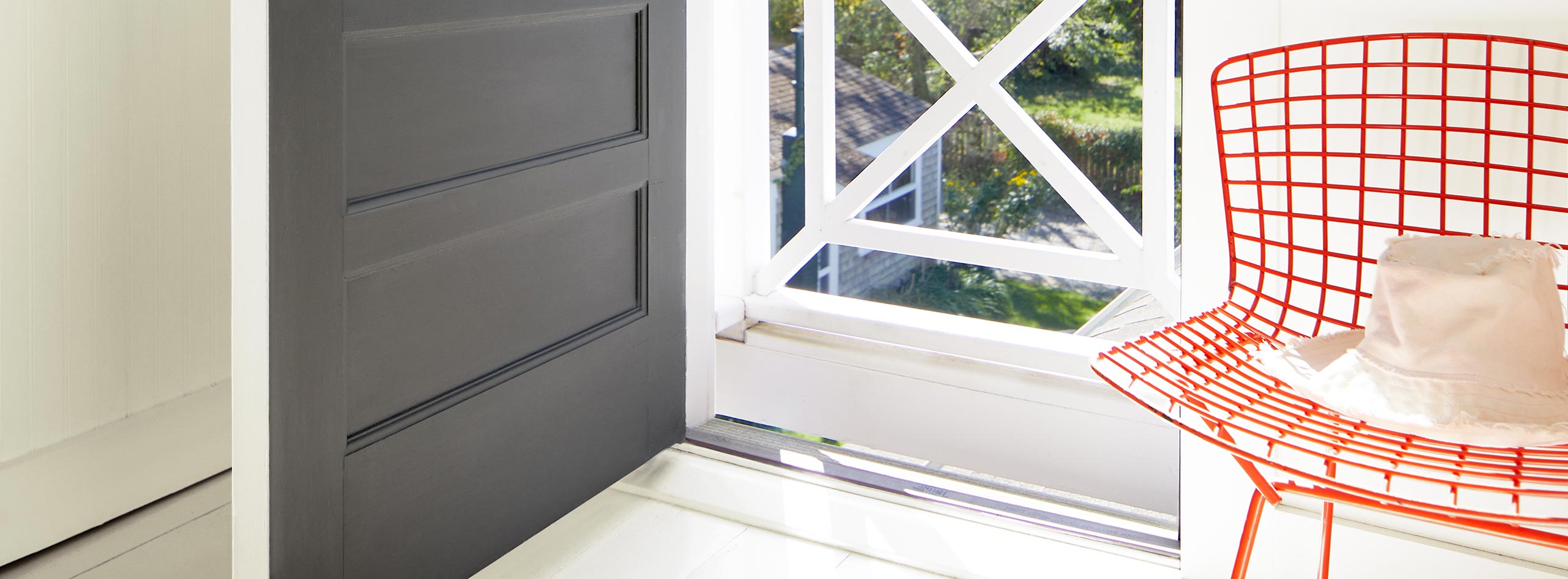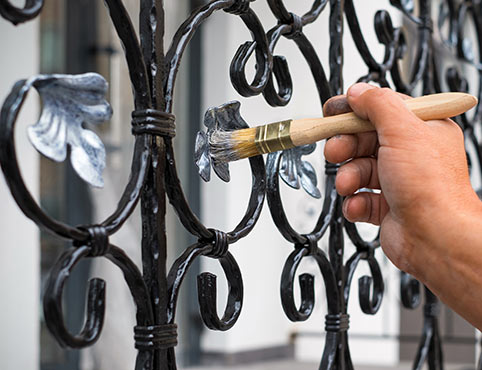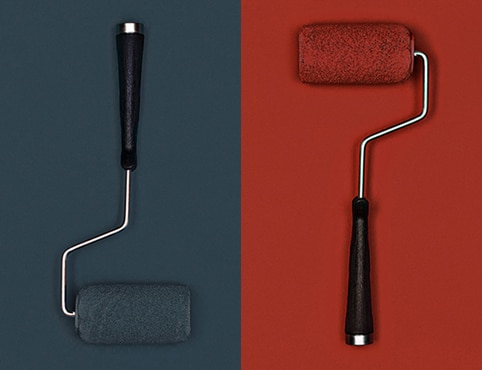Goal 1: Removing Paint from Metal
If a few specks of errant paint landed on a piece of ferrous or non-ferrous metal, don’t worry. You can remove that bit of paint from metal pretty easily.
Sanding paint off metal might strip away the coating, but doing so risks scratching the substrate, depending on the type of metal.
To remove an oil-based or alkyd paint, scrub it with a wire brush. If the paint is acrylic, use denatured alcohol and a wire brush. When using alcohol, be sure to follow all safety recommendations.
If you’re trying to remove paint from aluminum, brush gently with a stainless-steel wire brush, being very careful not to scratch the surface.
Rinse the metal with water, then seal the entire piece with a coat of the appropriate metal primer.
Goal 2: Getting Paint Off Metal That Is in Decent Condition
Good news: If the metal is not rusted, there is no need to strip off the paint. You can simply paint over the existing coating.
Make sure the surface is clean, dull, and dry before you start painting. You may want to sand the old paint down a bit for a smooth finish.
If sanding is necessary to smooth the painted metal surface, use 180- to 220-grit sandpaper and a sanding sponge for non-ferrous metal (like aluminum) or 80-grit sandpaper for ferrous metal (like steel or iron). Be sure to sand aluminum gently, as it’s easily scratched. When using sandpaper, be sure to exercise safety measures, including but not limited to protection for your eyes and respiratory system.
When the surface is clean, dull, and dry, it’s time to paint the metal. Apply an even coat of High Performance Acrylic D.T.M, which is easy to apply and can be tinted to any of Benjamin Moore’s 3,500+ colours. Allow the paint to dry completely.
Goal 3: Completely Stripping Paint from Metal
Removing a significant amount of paint from metal is a time-consuming and potentially dangerous job. We strongly recommend hiring a professional.
If you’re determined on stripping paint from metal yourself, consult your locally owned Benjamin Moore store for advice on the best chemical paint stripper and other tips for doing the job properly and safely.
Using a chemical paint stripper on your own may not achieve your desired result—and as mentioned, it takes a lot of time and can be hazardous. If you choose to do it yourself, be sure to read the label very carefully and follow all safety recommendations.
After Removing Paint from Metal, Prepare for Your Next Project
Find ideas, inspiration, and how-tos in our interior, exterior, and DIY sections—and take on your next painting project with confidence.
As always, visit your locally owned Benjamin Moore store for help with all your painting needs.
Frequently Asked Questions
Q. What is the easiest way to remove paint from metal?
A. To determine the easiest way for removing paint from metal, first consider the type of metal and the type of paint.
For oil-based or alkyd paint, scrub with a wire brush to remove the coating. If the paint is acrylic, use denatured alcohol and a wire brush.
If you’re removing paint from aluminum, brush gently with a stainless-steel wire brush, being very careful not to scratch the surface.
Q. What is the best tool for removing paint from metal?
A. The best tool to use to remove paint from metal is a wire brush.
Sanding paint off metal might strip off the coating, but doing so risks scratching the substrate, depending on the type of metal.
Q. Do I need to remove old paint from metal before painting?
A. You will sometimes need to remove old paint from metal before painting, but it depends on the condition of the item.
If the metal is not rusted, there is no need to strip the paint. You can simply paint over the existing coating.
Make sure the surface is clean, dull, and dry before you start painting. You may want to sand the old paint down a bit for a smooth finish.
Q. How do you remove paint from metal without damaging the metal?
A. To determine how to remove a coating from metal without doing damage, first consider whether the metal is ferrous or non-ferrous.
Not sure what kind of metal it is? Do a magnet test. If the magnet sticks to the metal, it’s ferrous. If the magnet does not stick to the metal, it’s non-ferrous.
Non-ferrous metal, like aluminum, is light and very soft. It can be damaged easily and should be treated carefully. Ferrous metal, like wrought iron or steel, is heavier and can withstand stronger scrubbing to remove paint.
To remove an oil-based or alkyd paint, scrub with a wire brush. If the paint is acrylic, use denatured alcohol and a wire brush.
If you’re removing paint from a non-ferrous metal such as aluminum, brush gently with a stainless-steel wire brush and be very careful not to scratch the surface.
Q. Which tools do I need to remove paint from metal?
A. To remove a small amount of paint from metal, you will need a wire brush and denatured alcohol.
Completely removing a significant amount of paint from metal is a time-consuming and potentially dangerous job. We strongly recommend hiring a professional.
If you’re determined to do it yourself, consult your locally owned Benjamin Moore store for advice on the best chemical paint stripper and other tips to do the job properly and safely.





